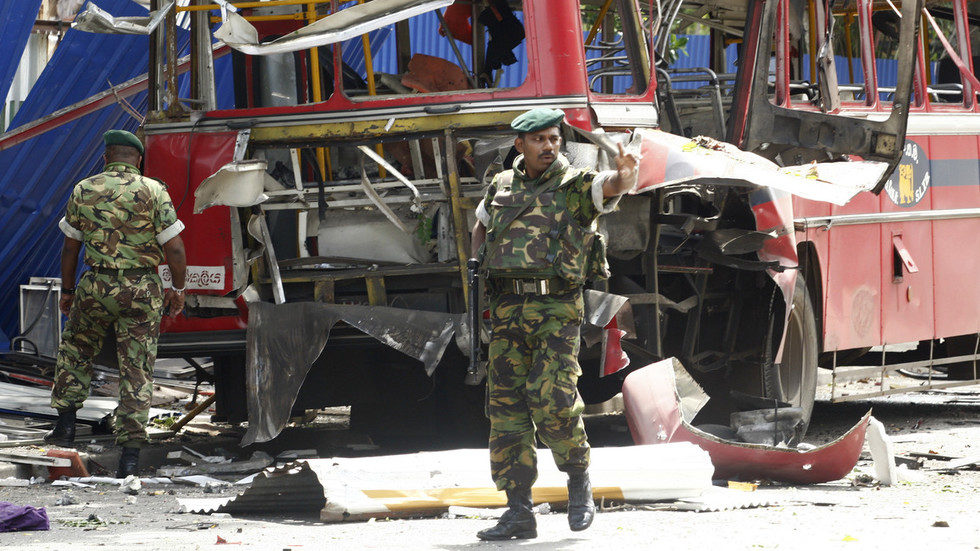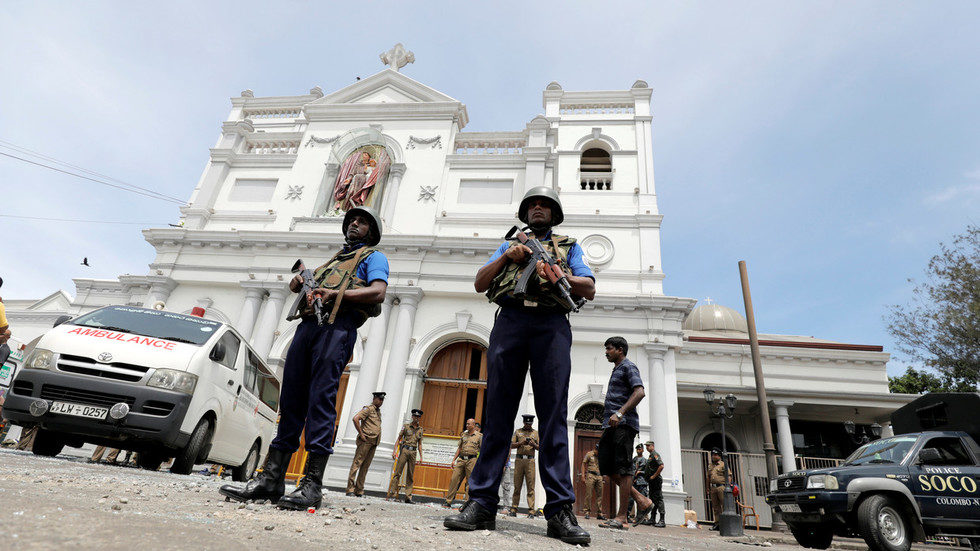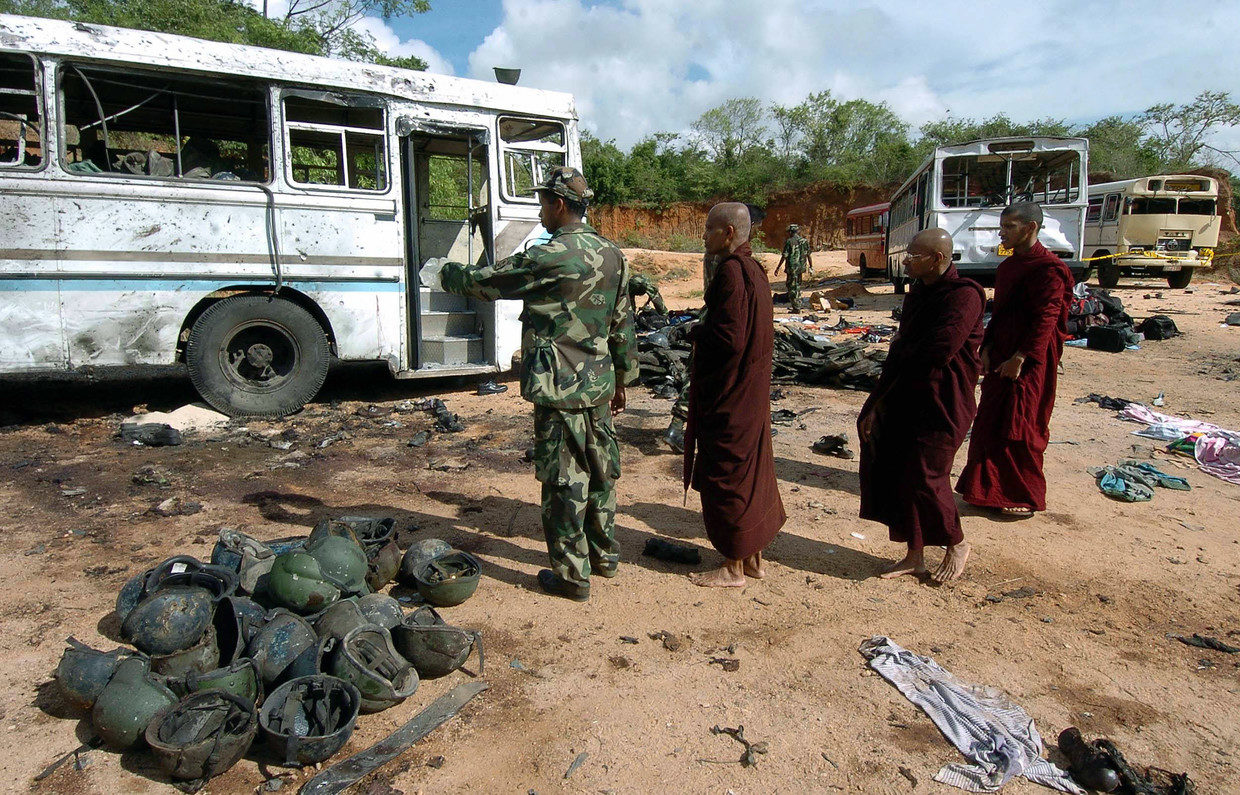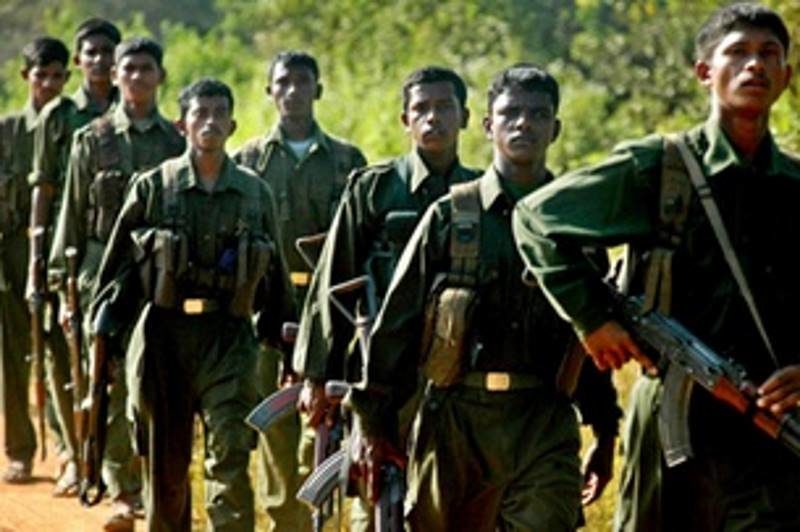The officials were completely "caught off guard" by the well-planned and coordinated attacks on Sunday morning, the Pakistani-based analyst told RT, because it was "something they didn't expect after 2009 when the Tamil Tigers insurgency was over."
Three packed Catholic churches were targeted by explosions, and three luxury hotels were also hit. Later, two additional blasts struck near the nation's largest city, Colombo. More than 150 people died in the attacks, and hundreds were injured, police said."The Sri Lankan government was in a comfortable zone thinking that the terrorism was all over."
No one has yet claimed the responsibility for the blasts but "the pattern suggests Islamic State (IS, formerly ISIS)," Rana said, adding that Tamil insurgency group, the LTTE, can't be ruled out either, since "their grievances are still there."
Even if Islamic State claims responsibility for the explosions, the government should conduct a thorough investigation and examine all local factors, he stated.
Once an active perpetrator of suicide bombings, the LTTE was officially defeated 10 years ago, and Sri Lanka has not experienced large-scale terrorist acts since then.
Javed Rana said that Sunday's attacks were clearly intended "to cause maximum panic" and "send a message to the world that foreigners inside Sri Lanka aren't safe."
The Sri Lanka bombings have brought back painful memories of past violence.

On Easter Sunday, a series of apparently coordinated bombings happened at several Christian churches and luxury hotels in the South Asian nation. No group immediately claimed responsibility for the bombings. With the death toll standing at over 150 and rising, and reports of more explosions coming in, Sri Lanka is experiencing one of the worst acts of organized violence in its history. And this is a strong statement, considering how much bloodshed that history has had.
The nation of over 20 million people had relatively peaceful lives since 2009. But before that Sri Lanka was engulfed in a 25-year-long civil war, as part of its Tamil ethnic minority was attempting to secede and form a nation state in the north and east of the country. Spearheaded by the organization called Liberation Tigers of Tamil Eelam (LTTE), the fight saw a number of high-profile attacks that killed hundreds of Sri Lankan soldiers and civilians.
The Tamil Tigers were ultimately defeated in a painful counterinsurgency effort that ended in May 2009. Their last bombing happened two months earlier, when a suicide bomber set off an explosion near a religious procession in Matara, a major city in southern Sri Lanka. It killed 14 people and injured 35 others.
The Habarana bombing in October 2006 was the deadliest of all attacks attributed to the LTTE in the 2000s, with the death toll surpassing 100. The extremist group targeted a convoy of buses carrying sailors going on leave. A truck loaded with explosives detonated nearby, killing between 101 and 112 people, and injuring over 150.
Their deadliest bombing attack targeting civilians rather than combatants was the 1987 explosion at a bus terminal in Colombo. A 40kg bomb planted inside a car was triggered during rush hour, killing 113 people and injuring almost 300 others.
In addition to using explosive devices in acts of terror, the Tamil Tigers also committed a number of massacres in areas bordering their zone of control. The one that happened in the village of Palliyagodella in October 1992 is believed to be the deadliest, resulting in between 160 and 285 deaths, according to different accounts.
Another perpetrator of violence against civilians in Sri Lanka's history was the Janatha Vimukthi Peramuna (JVP), now a recognized and peaceful political party but formerly an extremist Marxist-Leninist movement. The JVP was behind two armed uprisings against the government, in 1971 and in the late 1980s. Their armed struggle included tossing grenades at religious processions on several occasions.
The government of Sri Lanka itself has some dark pages and was credibly accused of engaging in acts of terrorism against the rebellious Tamil minority as part of counterinsurgency.






Reader Comments
to our Newsletter